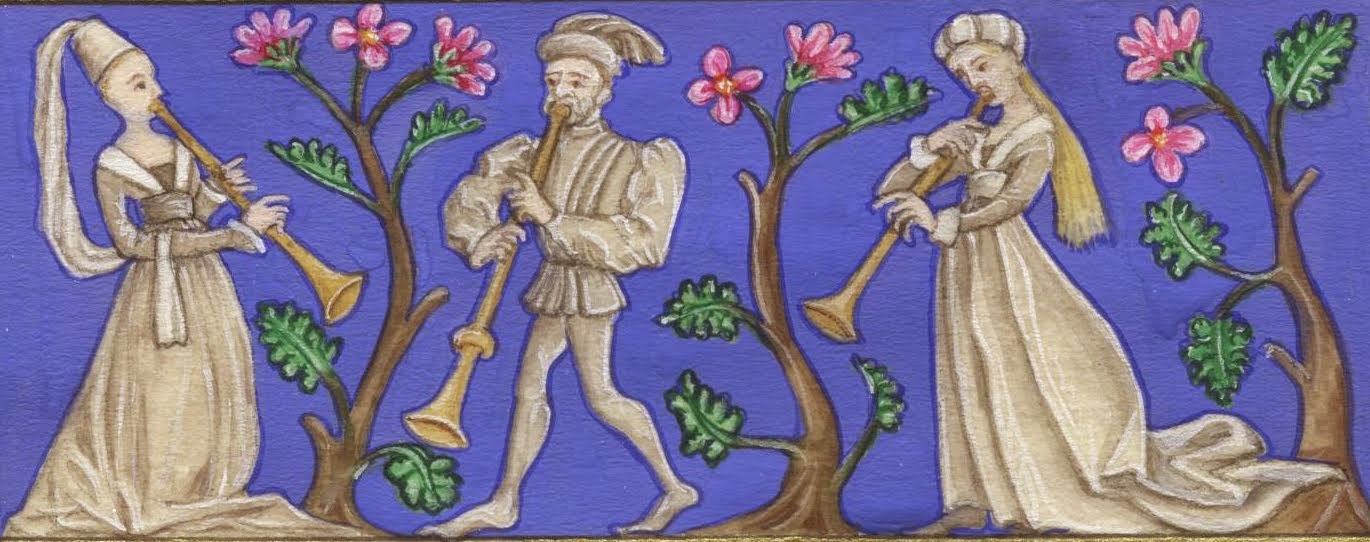So - apologies that time indeed got away from me and all went quiet for a while. But now I am inspired to post again by an issue about timing, or rather, tempo.
I've been reading the recent publication The Brussels Basse Danse Book, by Robert Mullally. It contains lots of interesting material about the background to this late 15th century manuscript, but I want to focus on one aspect regarding the interpretation of the music.
For the most part, the notation in the manuscript consists of a sequence of breves, one for each 'movement' (a double, a pair of singles, etc.) of the dance. I thought it was fairly widely accepted that each should be interpreted as a bar of 6/4, i.e., 2 groups of 3 beats. However Mullally argues that each should be 4 groups of 3 beats. This has a very substantial effect on feel of the dance, as it moves the double from being 'undulated' (in 6/4, stepping on 1,3,4) to being 'square' (in 12/4, stepping on each group of 3, to be effectively dancing in 4/4).
The manuscript itself is confusing because it says the tempo is 'major perfect' - which implies a main subdivision of the breve into 3, which does not fit either of the above schemes. Mullally first discusses this (p24) as implying 6/4, then argues for his 12/4 interpretation, naming this as 'major imperfect'. He then goes on, in his transcription, to inaccurately render (or intentionally 'fix'?) the relevant words in the text (p34) as 'maier imparfait' (I've just checked a facsimile, and it is definitely 'maier parfait' in the original).
There are some arguments for the 4x3 interpretation. For example this is very clearly the basse danse tempo given by Arbeau (writing around 1580, when the dance had gone out of fashion). Arena, writing in 1528 (although not actually providing music) says that each 'longa' is made up of four semibreves, where a longa clearly corresponds to a double. Arena also stresses several times that each 'movement' has 4 beats, e.g., a simple takes 2 beats.
The main counterarguments come from the relationship to the Italian bassa danza, which is almost as clear (from the match of music notation to instructions) in indicating a tempo of 6/4. As this is contemporary, and the Burgundian and Italian sources even borrow some dances from each other, it seems like good evidence. Not everyone agrees - I found that the (rather dated) 'World History of the Dance' (Sachs, 1937) contains an argument that "the basse dance is at all times and in all countries in even time". Mullaly does not discuss this anomaly, or clarify if he agrees with Sachs for the Italian bassa danza, despite elsewhere (e.g. p20) talking about a close relationship between the genres.
Other internal evidence comes from the small number of dances in Brussels that actually have mensural notation - e.g. Danse de Cleves - which I will discuss in a future post.

No comments:
Post a Comment